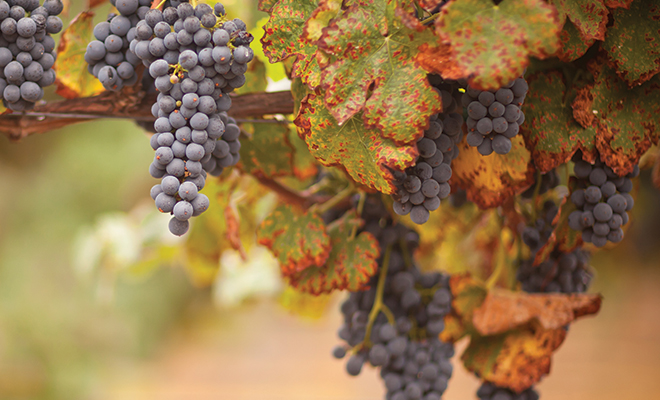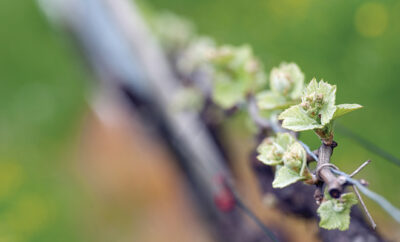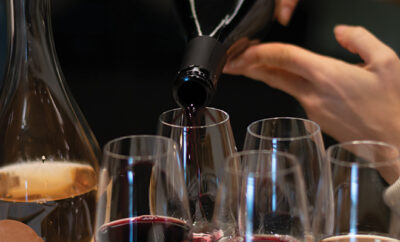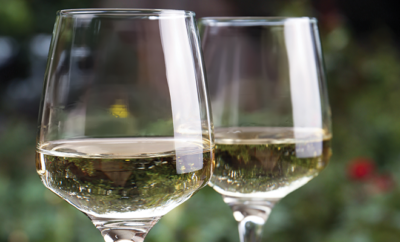
Que Syrah, Syrah!
Cabernet sauvignon may claim rights to the dinner table as the king of wine, but Syrah shares the stage with beautiful qualities that earn its place on wine lists at bistros, restaurants and wine bars.
Although both wines have some characteristics in common, such as earthy black pepper and hints of mint or eucalyptus, the warmer-climate Syrah has rich notes of licorice, mocha and clove spices that make it a delightful addition to favorite traditional and vegetarian dinner recipes. Additionally, tannic and acidic qualities of Syrah provide a sturdy structure for aging your favorite bottles; these wines can develop vegetative or leathery notes and may be enjoyed as a single varietal or blended.
Even though the color of Syrah is deeper than that of cabernet, the softer textures of Syrah can be found in wines of the Walla Walla and Columbia River regions of Washington State, as they provide perfect growing conditions for the Syrah grape to flourish without harsh heat spikes. Thriving in stony graphite soil, similar characteristics are found in Syrah wines of the Rhone Valley of France, where they are delightfully blended with two other red wines, Grenache and Mourvedre, to create a beautiful GSM that’s absolutely stunning with pâté and baked fig-brie galette with crostini. The GSM blend originated in the Southern Rhone region of France and contains fair shares of these three grapes designed to show the favored qualities of spice, dark fruit and tannic structure.
Old World vs. New World
Old-World-style Syrah is revered for its smoky, rich flavors that remain perfect for slow-cooked and stewed meats and vegetables. The description refers to the hand-crafted styles produced throughout Europe and the Mediterranean regions, considered by most as the birthplace of wine.
When a wine is called New World, it often refers to the modern method of making wine, from vineyard management to barrel and tank aging, which continue to evolve as technology supports efficiencies throughout the wine-making process. New World wines can have a brighter fruit or berry component and still maintain the delicate nature of an Old World style. Age of wine is not necessarily the difference between the two and one is not better than the other, as each style can combine the art form of the winemaker with the complementary nuances of the grape.
Shiraz by Any Other Name
Shiraz wine has been around at least since the ninth century. It originated in the Persian region of Shiraz, a fine wine-producing area now known as Iran. Shiraz was unique and specific to the region, recognized throughout the world. What is old was made new again when wine producers of the 17th century wanted to stake their claim among the world’s wine consumers had financial means and access to goods produced world-wide, including spices and wines.
The new Shiraz grape is identical to the original Syrah grape brought to Australia by way of eastern France by James Busby, considered to be the father of Australian wine. Rebranding Syrah into Shiraz created a new marketing strategy to steal a bit of European spotlight for the emerging wine markets of South Africa and Australia. Working with local and national wine retailers, American wine consumers noticed the “new” Shiraz and a wine varietal was reborn and appreciated anew. Shiraz is flourishing Down Under in Barossa, Hunter Valley and Margaret River. Shiraz is also produced in California, Washington State, France, Chile and New Zealand. Consumers will be delighted to find the familiar pepper spices and blackberry-currant flavors in their glass of Shiraz.
Not Petite Sirah or Durif
Some folks ask if Syrah is the same as Petite Sirah. No, it’s not a small Syrah. The name arises because the Petite Sirah grapes are so very tiny and tightly wedged in their grape clusters, requiring a great deal of labor to select the best fruit for wines that can be acidic and dry. Oddly, although Petite Sirah originated in France, discovered by Francois Durif as a Syrah hybrid, production is on the decline as vineyard managers have reduced their plantings of Petite Sirah. We continue to refer to Petite Sirah as the Durif grape to honor the historical significance of determining the DNA of many old world varietals. Durif continues to thrive in California and throughout the world’s wine regions.
Syrah has many lovely qualities that pair well with the fall menu of root vegetables, roasted tenderloin and saucy Asian dishes. Consider Syrah when you order grilled halibut or swordfish. When dessert is chocolate mousse or brandied berry tarts, you may find a serving of Syrah wine provides the perfect finish to a beautiful meal. If you are a cigar fan, some smoke shops provide wine-soaked cigars that are terrific as gifts or great to pack for upcoming recreational trips. ■
Sources: decanter.com, en.wikipedia.org, winefolly.com and winespectator.com.







